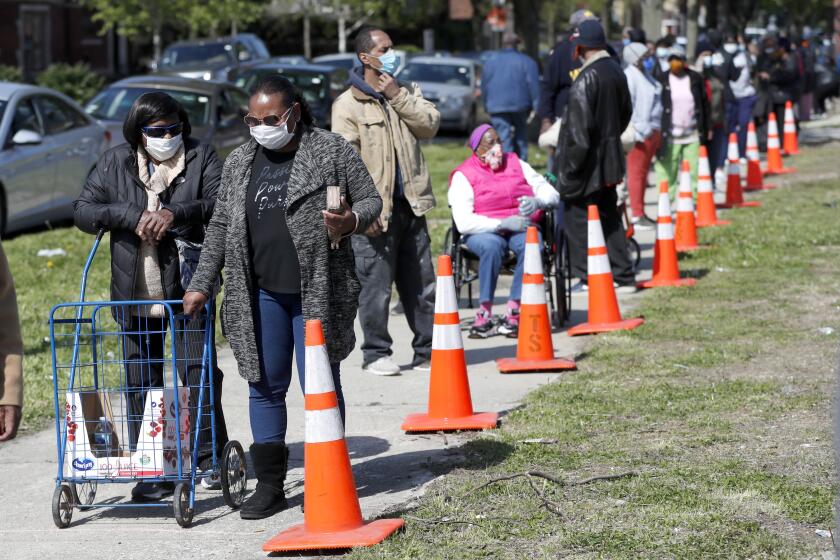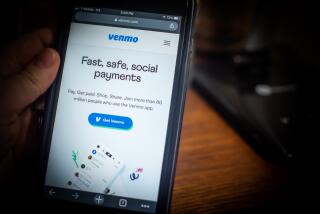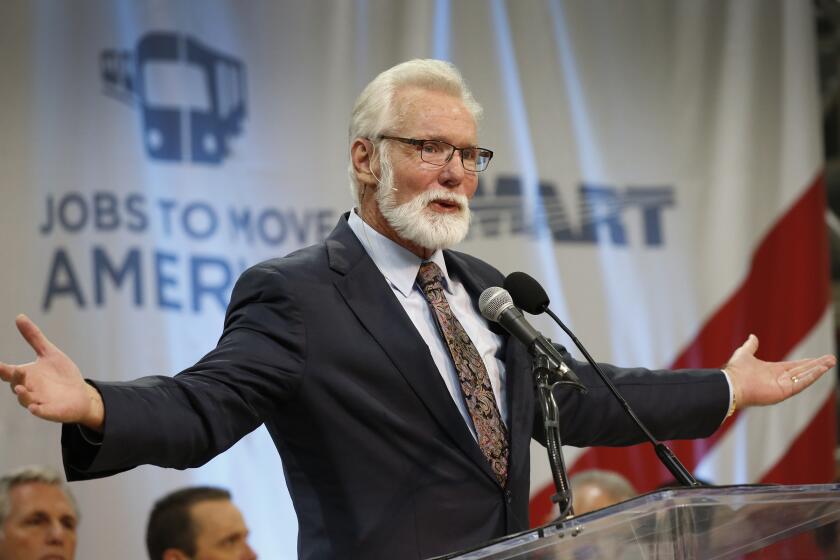In a pandemic, no one wants to touch it. Why cash has become the new Typhoid Mary
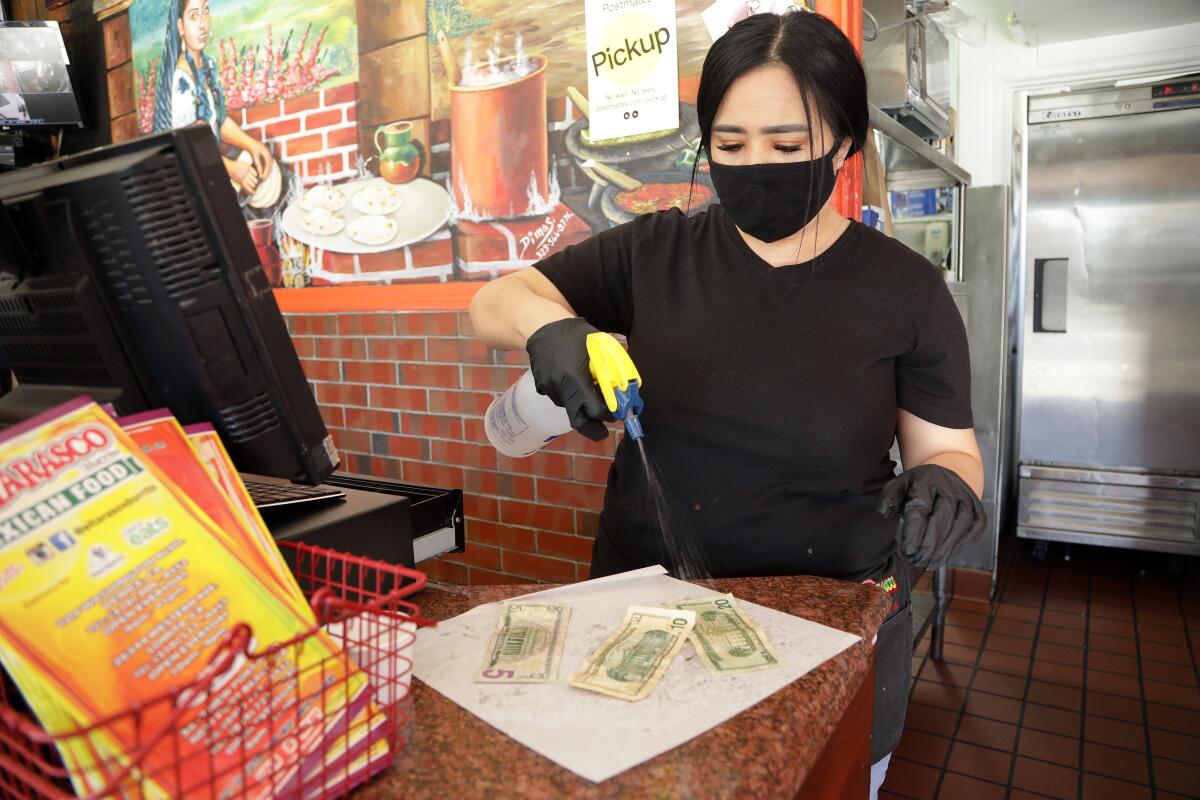
- Share via
“This note is legal tender for all debts, public and private.” That’s what it says right under “Federal Reserve Note” and “The United States of America.”
But legal tender won’t be accepted to play at one of the city of Los Angeles’ dozen public golf courses. Or for the $15 charge to enter the Los Angeles County Arboretum and Botanic Gardens in Arcadia. More than 30 Armstrong Garden Centers around California also ask for “touchless” payment options, as does the Beehive clothing boutique in Manhattan Beach and the Munch Company sandwich shop in South Pasadena.
The almighty dollar has lost some of its might in the time of COVID-19. While most struggling businesses will take payment in any form to make ends meet during the economic downturn, a minority reject cash, fearing that it could be a transmission vehicle for the SARS-CoV-2 virus. Some experts predict that the pandemic will accelerate a steady flight by American consumers away from dollars and cents.
“This crisis is clearly pushing us even farther away from using cash in our everyday legal transactions,” said Kenneth Rogoff, a Harvard University economics professor and author of “The Curse of Cash.” “And it’s for obvious reasons. No one wants to touch something you or someone else just touched. That’s not going to change any time soon.”
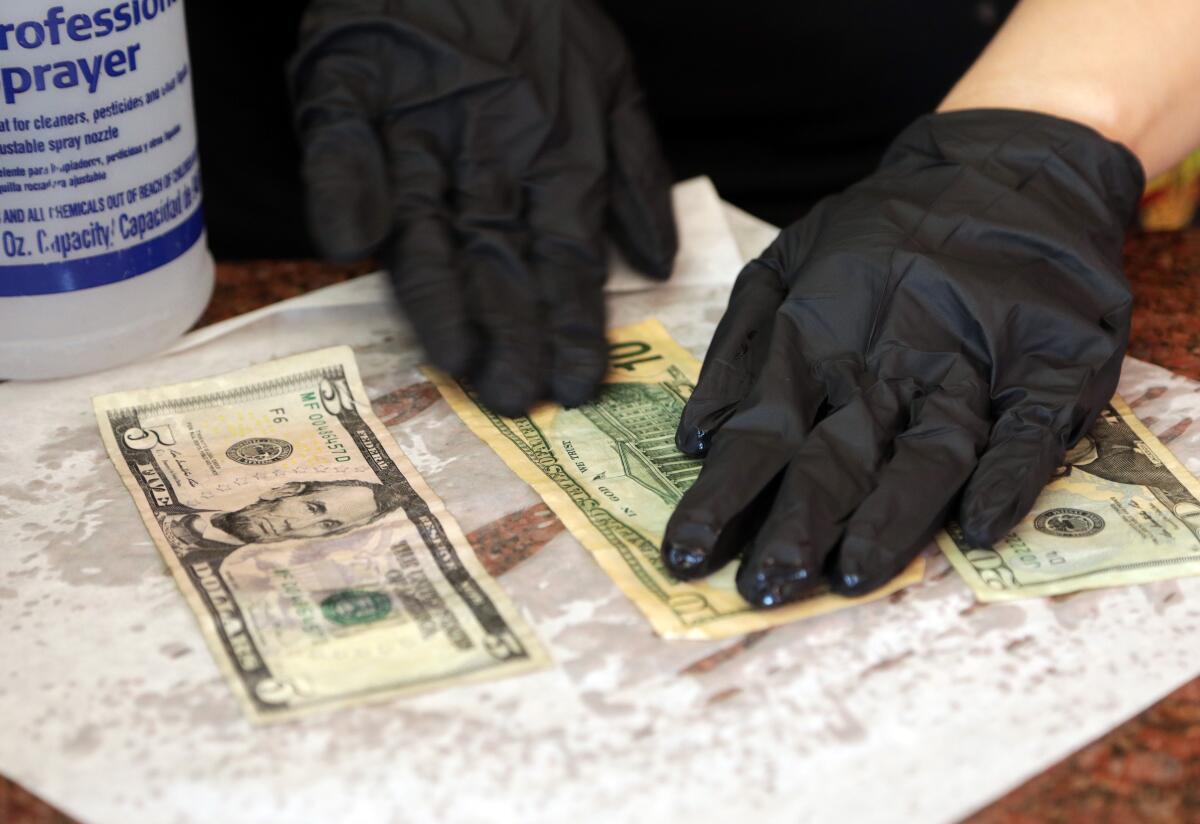
Dollars remain in record circulation around the world, in part as a perceived safe haven for investors and, not infrequently, according to Rogoff, as the preferred vehicle for money launderers and tax evaders. But on Main Street, the use of greenbacks makes some retailers and customers flinch, and contrary to popular belief, there is no federal law that requires businesses to accept bills and coins, according to the Federal Reserve’s website.
Noshi Sushi in Koreatown, a cash-only business for decades, has begun taking ATM and credit cards and now completes nearly half its transactions with plastic, said manager Jacky Gomez.
At a Coffee Bean and Tea Leaf in Manhattan Beach, cashier Jennai Dreger notices how cash often comes scribbled with notations. “People put down their phone numbers and I see the area codes are from all over the place,” said Dreger. “And, I’m like, ‘OK, this money has been everywhere.’ ”
She much prefers the no-touch transactions when customers use the coffee chain’s mobile phone app. “I don’t have to touch their money. I don’t have to touch their card. I don’t have to touch anything. The only contact is between the scanner and their phone,” Dreger said. “And I am like, ‘Yes!’ “
Backers of direct-cash programs such as universal basic income see new opportunity because of coronavirus relief. And support appears to be growing fast.
Sinnaca Bell of South Los Angeles delivers food for Postmates. He has noticed even before the COVID crisis how cash would be stained, sometimes with what looked like blood. “If you have Venmo, or anything like that, you use it,” said Bell, 41. “Most people don’t really want to deal with cash.”
There has not been specific research on the danger of the coronavirus being transmitted via cash. A National Institutes of Health study found that SARS-CoV-2 remained infectious on cardboard for up to 24 hours. But germs picked up from surfaces can be eliminated by thorough hand washing. The primary means of transmission remains through respiratory droplets produced when an infected person coughs or sneezes.
That doesn’t make cash any less creepy to many of the consumers and workers who handle bills, with no way of knowing who has touched them before.
Kay Nam, owner of Current Events newsstand in Manhattan Beach, said she serves customers every day who leave cash and coins rather than take the money, and potential germs, with them.
“With the virus, some people don’t want to touch money at all,” said Nam, whose family has owned the business for 22 years. Some loyal customers also want to leave their change to help support a local business, including one regular who pays $20 for his $2.50 newspaper. Says Nam: “There are a lot of good people out there.”
Good intentions don’t equal safety, though, and most cashiers said they wash their hands routinely, sometimes after every transaction. Or they apply regular shots of hand sanitizer.
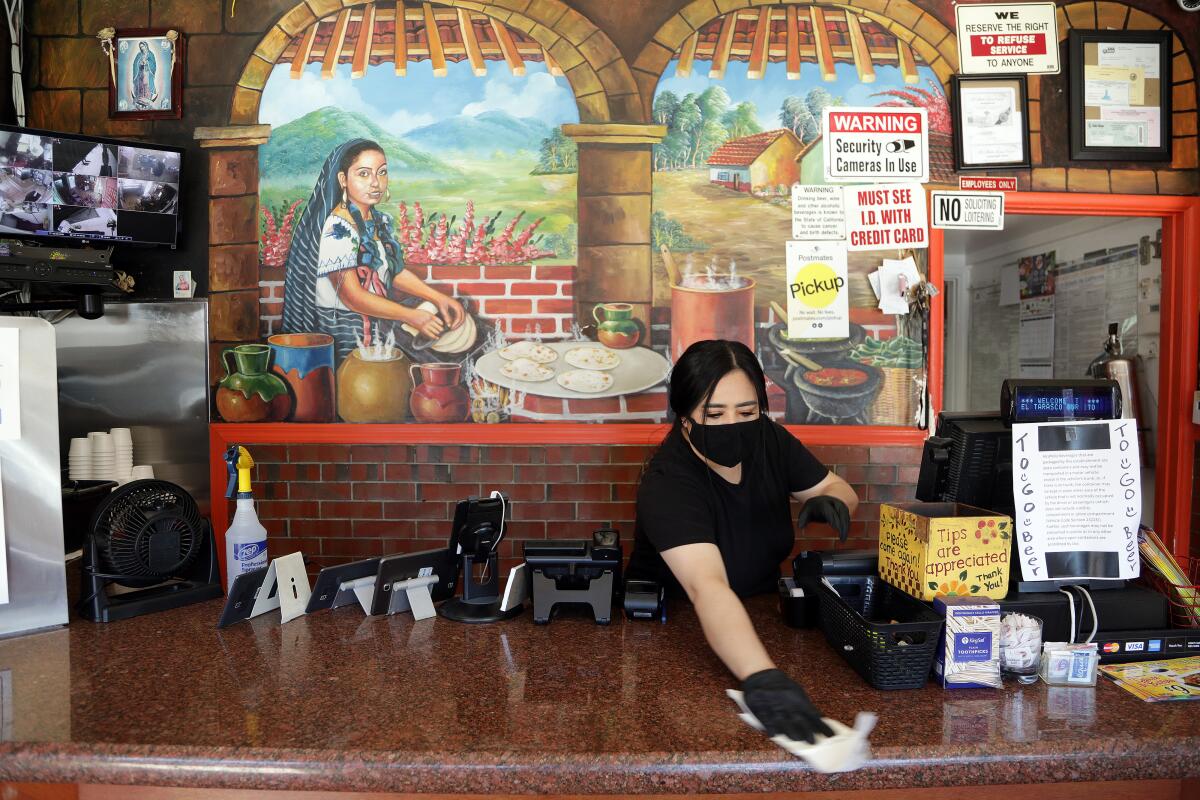
At El Tarasco, a Mexican food joint in Marina del Rey, cashier Maricela Moreno goes a step further. She takes each new bill offered to her and sprays it down with alcohol. She leaves the dead presidents lying atop a paper towel until they have dried, before returning them to the cash drawer.
Moreno laughs a bit at her money laundering (the literal and legal kind, that is) but adds: “Why not? Just to be safe.”
A shift to other forms of payment has been encouraged by government agencies, such as the California Department of Public Health, which suggests the use of debit and credit cards. Reopening plans for multiple counties also recommend “contactless” payment systems.
The retreat of cash comes with an advance of electronic payment systems such as Square, created by Twitter co-founder Jack Dorsey, and PayPal, also the parent of Venmo.
PayPal added an average of 250,000 new accounts a day through April and now has 325 million active accounts worldwide, up from 277 million accounts a year ago. More than half of its accounts are in the United States.
“I think what’s happened with the pandemic is it’s taken a three- to five-year time frame that it would have taken for digital payments to hit a tipping point and fast-forwarded it to reach that tipping point literally within months,” PayPal Chief Executive Daniel Schulman said in an interview.
Although some older consumers had clung to cash, the digital pay platform now sees the 50-plus age group as its fastest-growing demographic. “Before it used to be cash or checks. Now they are going to a payment platform to send money to the grandkids,” Schulman said.
Some businesses prefer cash to reduce charges from bank card companies. They also don’t suffer a tremendous penalty for holding the money outside of banks, for a time, because low interest rates would generate almost no growth. But there are hidden costs, like the higher rates of insurance paid by companies that carry lots of currency.
Much of the demand for cash in the United States comes from businesses that also save by underreporting their income and thus illegally reducing their taxes, said Harvard’s Rogoff. His 2016 book concluded that about 15% of individual federal taxes are never paid, even after audits, amounting to a $500-billion-a-year loss for the U.S. Treasury.
The latest maps and charts on the spread of COVID-19 in California.
While many hail the shift to a cashless economy, others say that it raises equity concerns, because the poorest Americans have no access to digital alternatives. Much of the world, led by Scandinavia and Japan, has moved to ensure that virtually their entire populations have access to online payments. China introduced a digital currency this spring in four cities, paving the way to its becoming perhaps the world’s first cashless society.
But a survey by the Federal Deposit Insurance Corp. found that roughly 6% of the U.S. population, about 14.1 million adults, doesn’t have a checking or savings account, and thus can’t access funds online. That gap will have to be closed if America is ever to come closer to a cashless future.
Acknowledging the “bankless” community, San Francisco last year passed a measure requiring all businesses to keep taking cash. The policy remains in place, despite the pandemic.
For now, many businesses just want to reassure customers that their transactions won’t come freighted with a load of microscopic intruders.
“We don’t know when it will be time to take cash again,” said John Chen, owner of the Munch Company. “For right now, we just avoid contact. It’s a good thing for everyone. We keep everyone safe and happy.”
Times staff writer Sarah Parvini contributed to this story.
More to Read
Sign up for Essential California
The most important California stories and recommendations in your inbox every morning.
You may occasionally receive promotional content from the Los Angeles Times.

